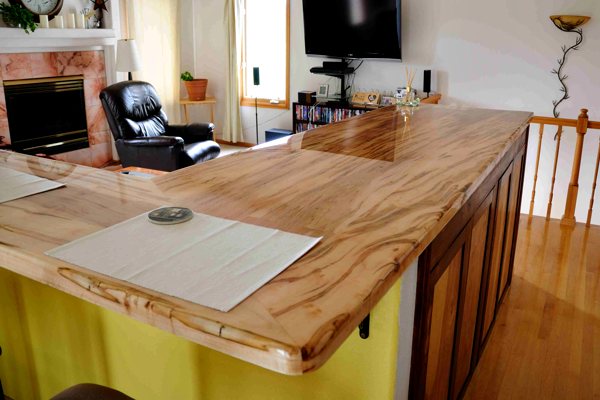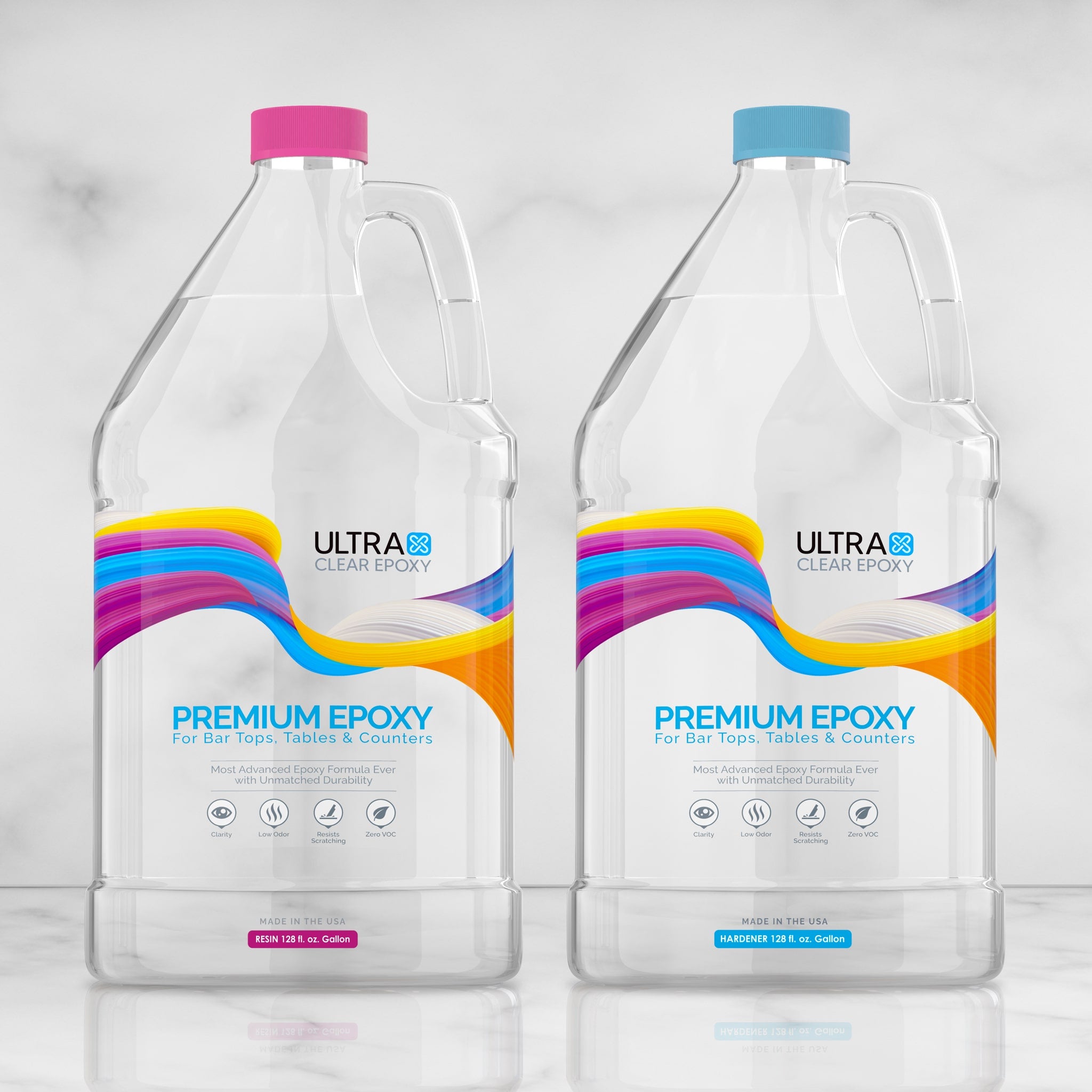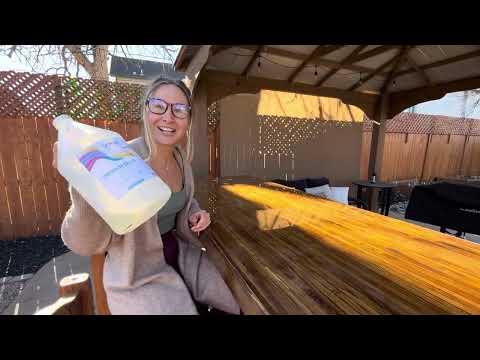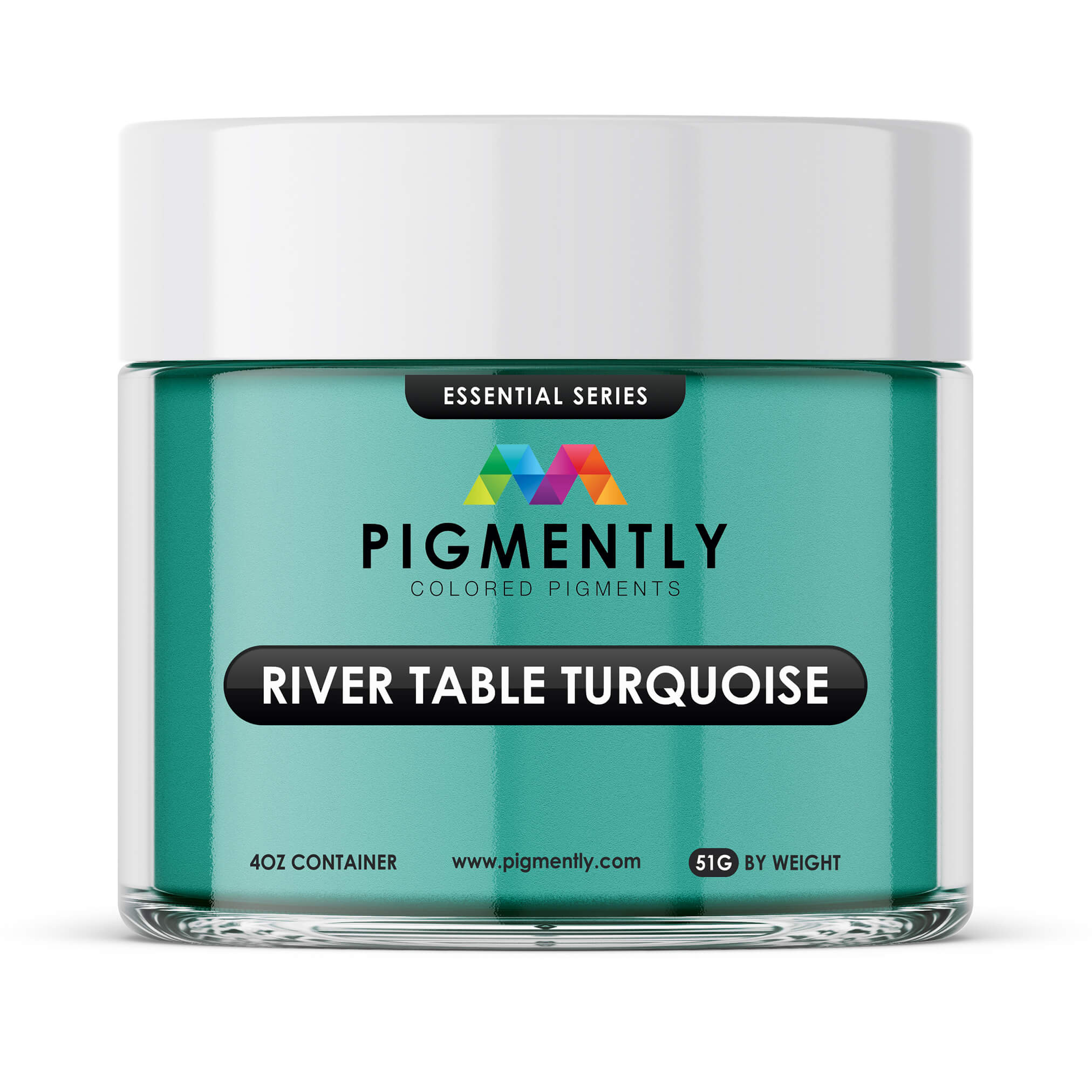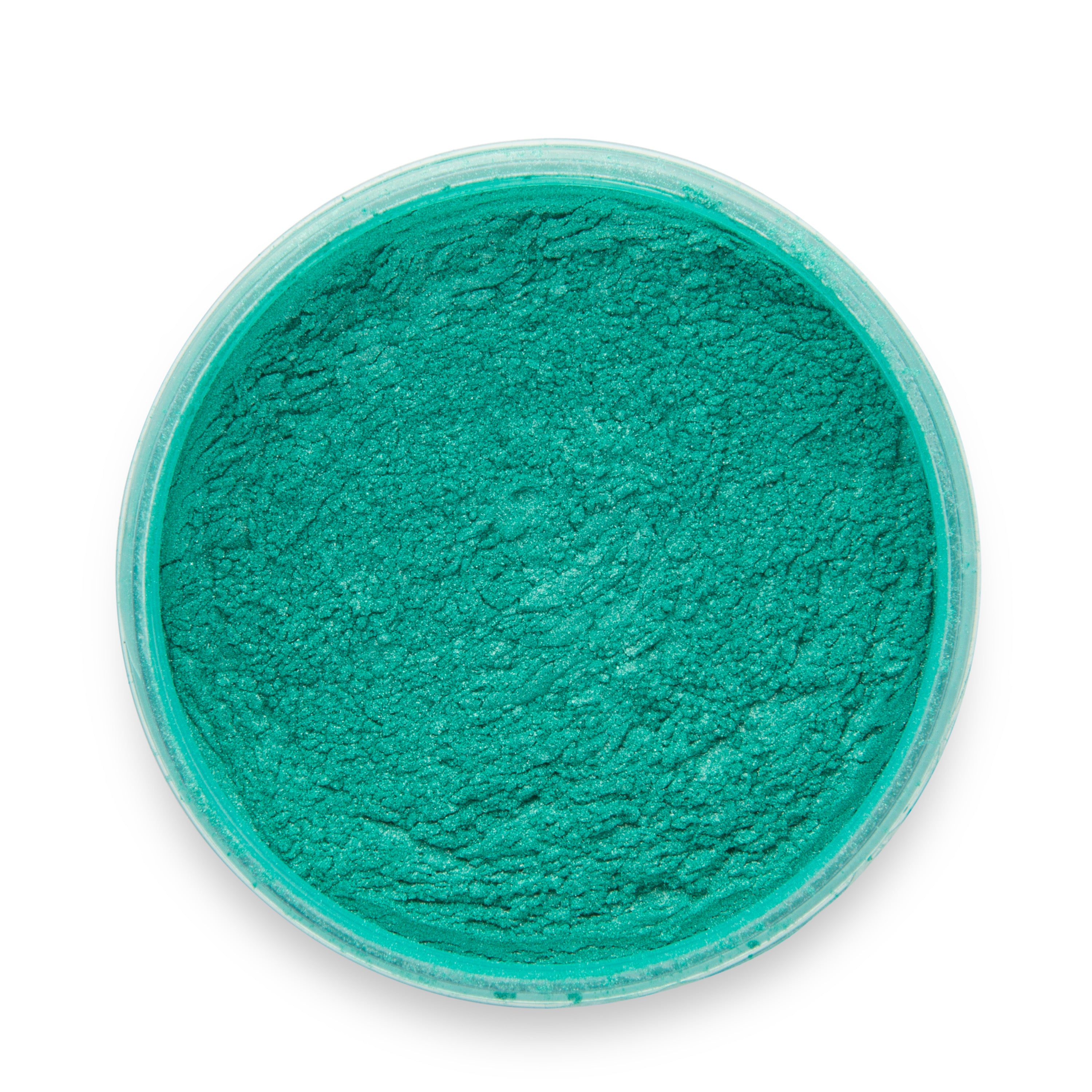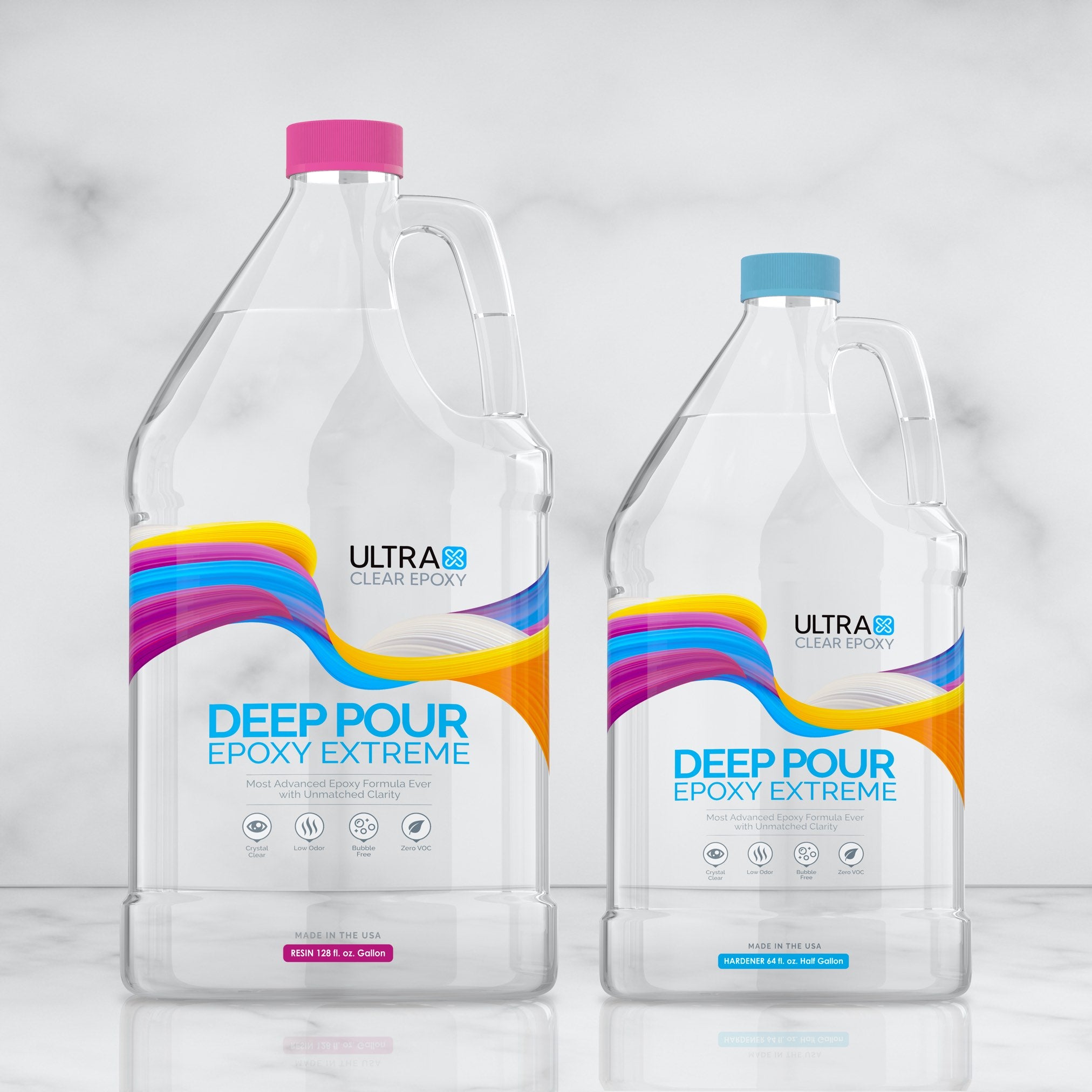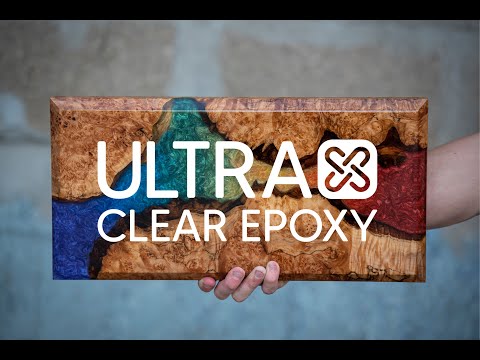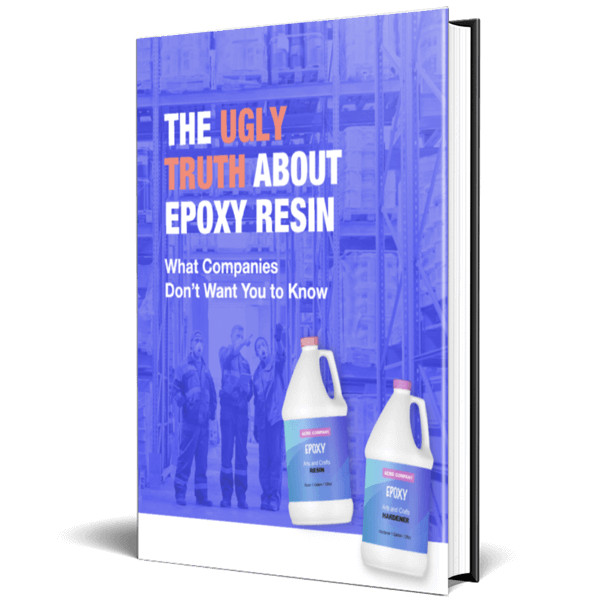Epoxy resin is well known as an incredibly durable finishing option for nearly any type of countertop material. It brings immense protection while providing a remarkably transparent appearance that won't interfere with a countertop's inherent beauty.
However, much like any other material, epoxy is not fully impervious to damage. Though it is highly resilient, there are times where it can falter, potentially becoming cracked, chipped, or dented.
Fortunately, these issues are almost entirely avoidable with just a little care when planning and performing an epoxy project. In this article, we'll explain the unique circumstances it takes for an epoxy countertop to crack and inform you on how to prevent it.
What can cause an epoxy countertop to crack?
Though it's possible for epoxy countertops to develop cracks within the epoxy finish, it generally happens under particular circumstances. Learning about which factors contribute to cracking can help you avoid this and other problems by preventing the causes to ensure a long-lasting, durable finish for your epoxy countertop.
Let's go over what the most common causes are.

Cause #1: Poor measuring or mixing of the epoxy.
A common reason for epoxy cracking is when the epoxy wasn't measured properly. Epoxy starts out as two separate liquid components that must be combined to initiate the curing process, which leads to hardening. When these components added in the correct ratio prior to mixing, they may fail to cure, often leading to brittle epoxy that cracks very easily.
Additionally, epoxy must also be thoroughly mixed after measuring. A thorough blending can be achieved with just a few minutes of mixing, and it's important that this step not be cut short, as poorly blended epoxy that wasn't mixed well enough may have residual unblended components, resulting in a finish with sporadic weak spots that contribute to fragility.
How to prevent this problem:
This issue is easily preventable by properly measuring and mixing each epoxy batch:
- Always carefully follow the manufacturer’s guidelines for mixing ratios and application techniques.
- When mixing, make certain that the resin and hardener are fully blended to facilitate complete curing and ensure optimal strength.

Cause #2: Poor Surface Preparation
At the beginning of a project, it's highly recommended that the substrate surface onto which the epoxy will be applied be clean and dry before applying the epoxy. Contaminants—such as dirt, oil, moisture, or other sediment—on the countertop surface can interfere with the epoxy’s adhesion, leading to weak spots that may crack over time.
On top of that, it also helps to have an even substrate. In some cases, an unstable base for the epoxy can lead to stress points within the epoxy layer itself, increasing the likelihood of cracks forming.
How to prevent this problem:
- Before you start using the epoxy, make sure the surface you'll be applying it to has been fully cleaned and allowed to dry.
- Provide a stable foundation for the epoxy while it cures.

Cause #3: Structural Movement
Epoxy by nature can sustain a small amount of flex, allowing it to handle small changes in shape, which is important since many common substrate materials (such as wood or concrete) tend to expand or contract due to significant temperature and humidity changes.
Occasionally, however, an epoxy finish may give in to high stress due to expansion, contraction, or flexing of a coated material in response to extreme shifts in temperature or humidity. This effect is mostly a concern in marine applications and is rarely relevant outside of those situations.
Furthermore, epoxy can be used on its own to create a usable surface. This is commonly seen in certain types of epoxy table tops. However, an epoxy surface that is both too thin and unsupported by a more rigid material may result in excessive movement (e.g., bending) that leads to cracking.
How to prevent this problem:
- For marine use, incorporate fiberglass mesh or other reinforcement materials within the epoxy to enhance its strength and flexibility. For non-marine use, just be sure to use a high-quality epoxy resin, and avoid budget brand epoxies that are less stable and flexible.
- Make sure the underlying structure of your project is stable and well-supported to minimize movement that could stress the epoxy.

Cause #4: Environmental Factors
Various environmental factors can affect the epoxy before and after project completion. For instance, during an epoxy project, it's important to provide suitable climate conditions for proper blending, pouring, and curing.
Another environmental concern is UV radiation. Prolonged exposure to ultraviolet (UV) rays can degrade the epoxy over time, making it more susceptible to cracking. In most cases, this is caused by direct sunlight, making it primarily a concern for outdoor epoxy countertops. However, this problem may also be present in places with artificial UV lighting.
How to prevent this issue:
- When performing an epoxy project, apply and cure your epoxy in environments with stable temperatures and low humidity to prevent stress from environmental changes.
- Choose a high-grade epoxy resin for your project. Provide cover to the finished project to protect it from the sun, either through natural shading or a constructed shelter. You may also consider applying a UV-protective topcoat to shield the epoxy from sunlight.

Cause #5: Heavy Impact or Overloading
Perhaps the most obvious cause of cracking in epoxy countertops is due to sheer force. Heavy dropped objects and other potential sources of physical force can damage an epoxy finish to varying degrees.
Moreover, placing excessive weight onto an epoxy countertop can stress it, leading to fractures. The weight would have to be quite significant, however.
How to prevent this issue:
- Being mindful of the weight distribution on your epoxy countertop is the easiest way to avoid this problem.
- You can use protective measures to prevent direct impacts to the epoxy finish that might cause damage. Cutting boards when preparing food, trivets, and other protective accessories are both convenient and greatly reduce the likelihood of any damage.
- Finally, the use of a premium epoxy resin for the countertop finish will mean a much sturdier surface that can handle higher amounts of strain and endure stronger impacts.
Repairing Cracks in Epoxy Countertops
Repairing cracks in an epoxy countertop is relatively easy, and if cracks do appear in your epoxy countertop, it's good to address them promptly to prevent them from worsening.
How to repair cracks in an epoxy countertop:
Step #1: Clean the Area: Remove any debris or loose epoxy around the crack.
Step #2: Prepare the Surface: Lightly sand the cracked area to create a rough surface for better adhesion.
Step #3: Mix and Apply Epoxy: Prepare a fresh batch of epoxy and carefully fill the crack, ensuring it bonds well with the surrounding material.
Step #4: Smooth and Cure: Smooth the epoxy surface and allow it to cure fully according to the manufacturer’s instructions.
UltraClear Epoxy: Resin products of unmatched quality
As with any material, epoxy resin has both pros and cons. But no other sealant has so few weaknesses, and that's what puts epoxy above all other options when it comes to being a finish for high-traffic fixtures and furniture such as countertops, table tops, and bar tops. And among epoxy resin products, there are none that match the quality of UltraClear.
You can find our UltraClear Epoxy products on the following pages:
- UltraClear Bar & Table Top Epoxy: The classic choice for bar tops, countertops, and table tops. Rock-solid, waterproof, and crystal-clear.
- UltraClear Deep Pour Epoxy: Our deep pour casting resin. Ideal for thick layers, such as those needed for river tables.
- UltraClear Art & Craft Epoxy: Our arts and crafts resin, designed for smaller artistic endeavors which typically involve resin molds and require a bit more fluidity than bar top epoxy.
Epoxies that endure, with minimal upkeep
With high chemical and physical resistance, UltraClear resins can withstand and endure many forms of wear and tear without breaking a sweat or showcasing any cosmetic damage.
Plus, in addition to its ease of application, they also require little upkeep to maintain its pristine appearance. With a high-quality epoxy finish, you can expect a minimum lifespan of 7 years, with no need for reapplication. Beyond that, it's a breeze to renew that coating, requiring only a light sanding and a fresh layer of epoxy.
Expert support from our resin specialists
For more information about epoxy, or for assistance with your epoxy project, contact us at UltraClear Epoxy, where you can speak with one of our epoxy experts. During business hours, you can also text chat online with one of our resin specialists by clicking the Help button at the bottom of your screen.

